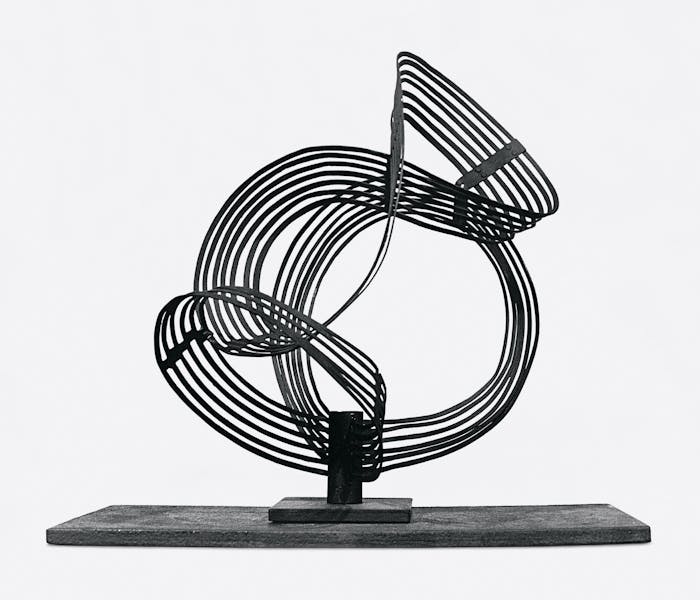The major Gego retrospective ‘Gego. Measuring Infinity’, which opened at the Guggenheim Museum in New York earlier this year, has come to Bilboa. The exhibition includes over 150 of Gego’s early paintings, experimental prints, suspended spheres, dangling ‘waterfalls’, free-standing ‘tree trunks’ and her 3-D ‘drawings without paper’.
Born Gertrud Goldschmidt (1912—1994) in Hamburg, Gego died in Caracas, Venezuela. Following her move to Venezuela in 1939, she worked as a furniture designer, mother of two, urban planner and interior architect, before becoming an artist in her late 40s. Given Düsseldorf’s parallel ZERO movement (1957—1966), whose respective artworks explored the relationship between movement, light and space, she might have found like minds had she returned to Germany. One suspects, however, that they likely would have overlooked her, as they did Mary Baumeister.
Similar in effect to Buckminster Fuller’s geodesic structures and Kenneth Snelson’s suspended tubes, Gego’s major artworks investigate structural systems involving tension, spatial relations and transparency. Unlike theirs, her pliable sculptures exude fragility, flexibility and the optical effects of motion and vibration. Being totally collapsible, they also seem the obvious solution to the perennial problem of shipping large-scale sculptures across continents. Of course, no one would dare to flatten them these days, even if she once did.
Later in her career, Gego created numerous two and three-dimensional reticulárea, flexible structures made of stainless steel and aluminium wire. Bendable like nets yet structured like grids, the reticulárea evoke animate beings such as trees and waterfalls. By far her most famous, Reticulárea (1981), is a room-sized immersive installation on permanent display at the National Art Gallery in Caracas.
